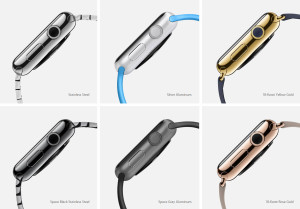 Usually, an article like the one in Wired about the development of the Apple Watch doesn’t run until the product in question actually ships. Long reads that focus on how a previously accomplished executive new to a challenging corporate culture overcame huge odds to produce a world-changing product are more effective if the product is in people’s hands and is, in fact, world-changing.
Usually, an article like the one in Wired about the development of the Apple Watch doesn’t run until the product in question actually ships. Long reads that focus on how a previously accomplished executive new to a challenging corporate culture overcame huge odds to produce a world-changing product are more effective if the product is in people’s hands and is, in fact, world-changing.
So Wired’s piece about how Kevin Lynch came from Adobe to Apple to run the Watch project is compelling, but a bit presumptuous. It’s a little like a late night talk show that books an entire week of stars of a yet-to-be released movie that might be a hit but also might leave a huge financial crater where a studio used to be. If the Watch succeeds the way the press would have you believe it will, the story is about a tech exec who made years of tough and non-obvious choices on the way to changing the world. If the Watch lands like a thud, it’s a story about a company that spent years inventing the Edsel. It’s a good story either way, but which story it is depends on an ending that is written in Wired but is very much unwritten in reality.
For us, the most interesting takeaway was the revelation that the decision to make a wrist device came before anyone had a use case for it, and that the functionality evolved from there. It’s like if Apple, maker of desktop computers, decided first to make a device that would people would carry around and only then addressed the question of what it would be: pager? music player? phone? It’s the opposite of the way most tech companies work — functional brainstorm first, form secondary — and that may be the most revealing way that Apple is different from everyone else.